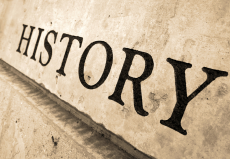

The agricultural revolution
The open field system – the feudal system- land is rented to peasants (villeins) in strips for them to farm. Most of what is grown is given to the landowners and a little is kept for the peasants. Every year a farmer would sow one field with wheat, another with barley and left the third fallow. Farmers used the shared common land to graze their animals or search for wood or wild food.
The enclosure system – People in villages with only a small numbers of landowners swapped their strips so that each owner’s land was combined into one area. Each owner could then enclose their land with hedges into a small farm with several fields. Common land was often included in the enclosures.
Enclosures allowed for 4 course rotation, one each for wheat, barley or oats, clover, and turnips or swedes; they swapped the crops round each year. This meant that none of the fields had to be left fallow because the clover and root crops put nutrients back in the soil. The root crops and clover could also be used to graze animals whose manure enriches the soil. Farmers could also control animals breeding to breed bigger animals with more meat or wool.
Working conditions in the factories and mines
Low wages and long hours.
Child labour used because they were more agile and so could crawl under machines to repair them. There were many dangers to health posed by the machines, as well as, noise, heat and overcrowding.
86% of workplaces had less than 10 people, however the new factories were huge and filled with hundreds or even thousands of people making them very dangerous
Roads, Canals, and Railway
Journeys by road were slow, bumpy, icy, often flooded, very busy, dangerous due to highwaymen.
A Turnpike Trust – a group of business of people who invested money to build roads called turnpikes. They built gates on the roads where travellers had to pay a toll in order to use the road. Turnpikes improved transport because they allowed people to travel faster because the roads were well looked after.
Increased pressure on the roads due to the factory system and the need for the transportation of more goods led to the creation of canals.
Canals had cheaper prices than turnpike trusts, a much smoother journey, one horse could pull a much heavier load than they could on a road, barges could carry more goods than carts. Twice as fast as by road.
Problems with canals – cost a lot to build, could freeze in winter, could dry up in summer, transported mail slowly, no passenger service, expensive to build aqueducts to get over valleys.
Increased pressure on canals for faster transport led to the creation of the railway.
Railways (iron horses) – cheap, fast and could transport huge amounts of raw materials quickly. They could carry 20 times the weight 10 times as far as horses in a day. The first railway was built in 1829 and was the Liverpool and Manchester Railway.
image-https://jagsmag.jags.org.uk/?p=747

0 Comment:
Be the first one to comment on this article.